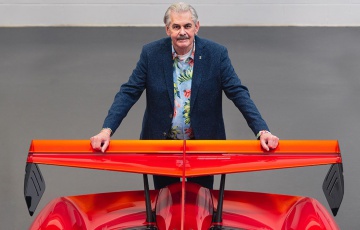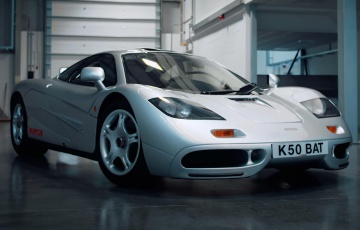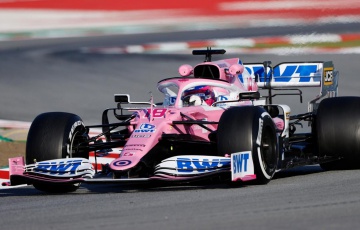TopGear tours Gordon Murray’s incredible T50 factory, and we play with a knob
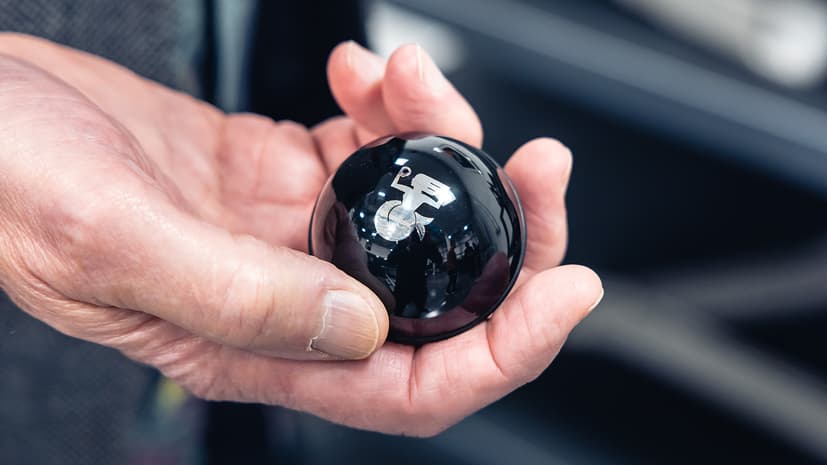
If you learn nothing else about supercars today, then remember this: there is one component of the Gordon Murray Automotive T50 which Gordon himself insisted was made heavier – yes, heavier – than it strictly needed to be.
It’s the gearknob.
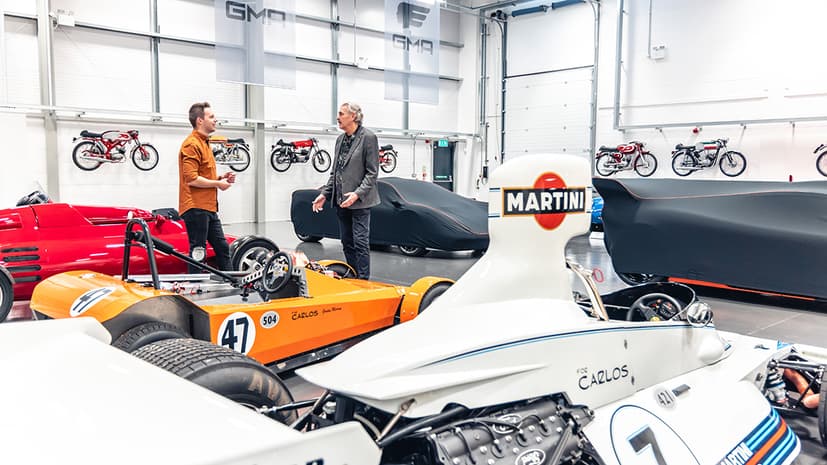
“That is heavy on purpose” Gordon explains as I pick up the glossy black ball from a shelf of T50 pieces and express shock at its unexpected heft. “We tested three different weights and this one overcomes the notchy synchro feel in first and second gear on a really fast gearchange.”
There you have it. The only piece of Gordon’s V12 hypercar that’s heavier than it strictly needs to be is the bit that makes changing gear manual feel nicer. What a guy. What a car.
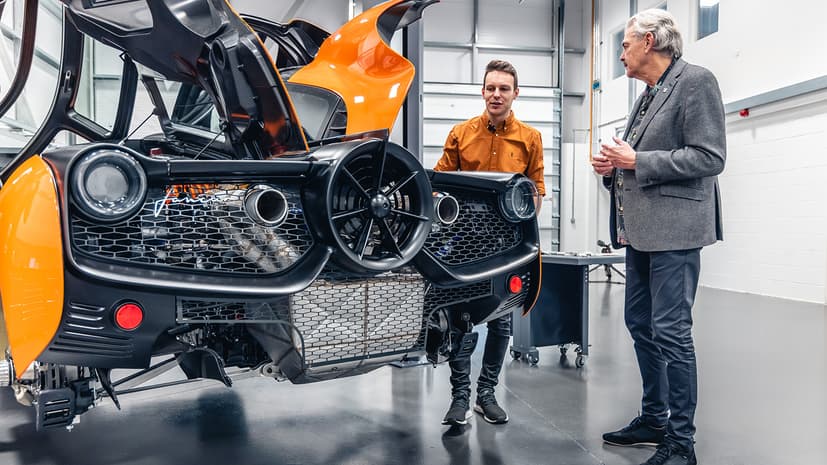
You join me amid a guided tour of the T50’s production line, in late 2021. XP cars – that’s eXperimental Prototypes – stand in various stages of completeness in the surgically clean industrial unit. It’s quiet, ordered, and calm.
There’s no hacking of bodywork with circular saws and flying sparks to make the early mules fit together. No packaging on the floor. If you weren’t aware of the Gordon Murray story, you might think this place has been churning out supercars for decades, not dipping its toe into the water for the very first time.
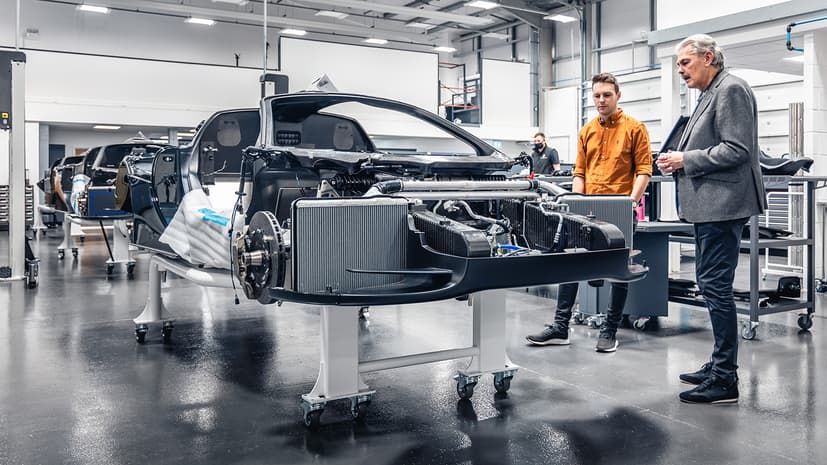
All 100 owners of a T50 will be (or have been) offered a guided tour of this production line by Gordon himself. When you’re paying £2.36 million plus taxes for a toy, you get more than just floor mats and a tank of fuel thrown in on the house.
This is the very building Professor Murray once housed his entire collection of lightweight cars and motorcycles in, displaying his weight-saving ethos next to a recreation of his old draftsmen’s office and some of his beloved jukeboxes. Now, the classics have mostly been moved aside, to make way for the T50’s birthplace. And today, Gordon’s giving me the customer treatment.
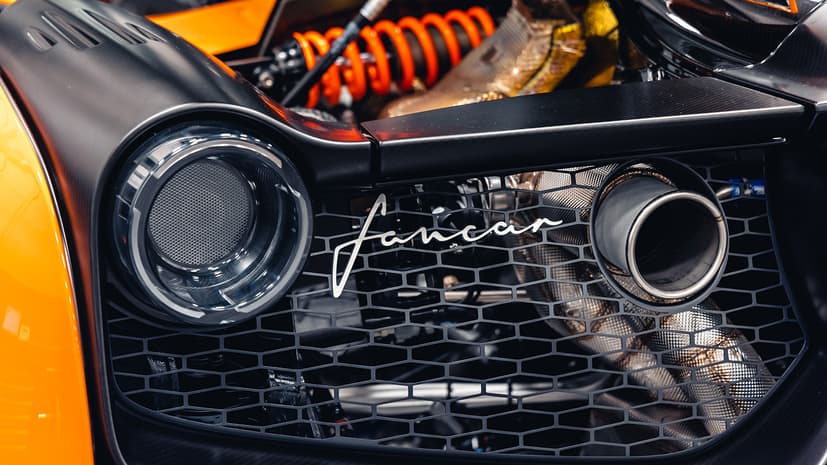
“This is XP10, it’s about to go off to Nardo,” says Gordon, gesturing at a bright orange T50 sat on a car-lift with its doors and engine bay covers aloft. The boss is keen to point out the exposed carbon weave – more subtle than on the likes of Bugatti or Pagani’s. “We’re trying different levels of gloss or satin finish. The cars are so bespoke, we offer ten different levels of tint.”
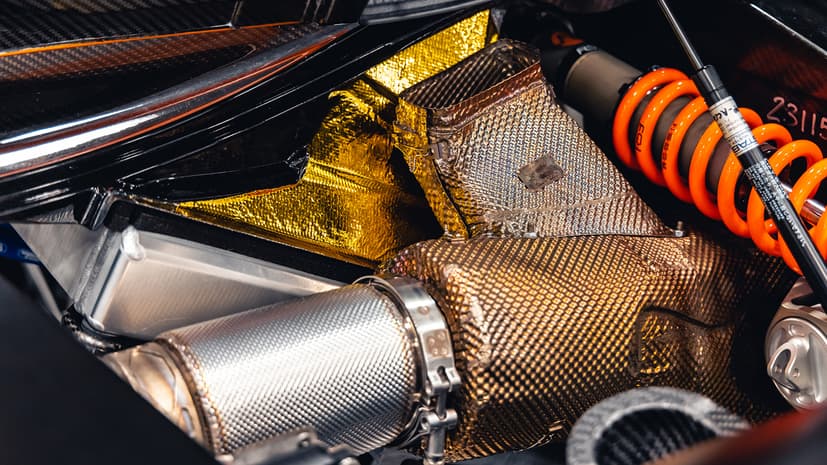
Heat-reflective shielding glints in the engine bay. Is it gold, a la McLaren F1? “That isn’t actually gold at the moment. We’re trying three different materials. In 30 years heat radiation materials have got so much better. If we get a particular hotspot we can’t solve, we’ll go to the 18-carat gold.”
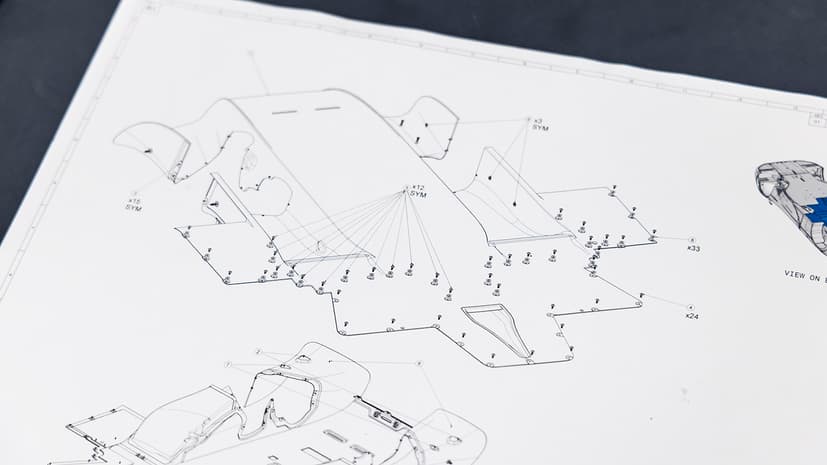
As XP10 is already wearing its rear-view cameras (instead of bulky door mirrors), Gordon can point out the pitot tube used “for a bit of fun” to measure static air pressure over the top of the car. “On the diffuser, we’ve got one measuring the dynamic or low pressure.” Handily, he points to a complete diffuser assembly lying upturned on a table close by, so we can inspect an angle of the T50 no owner will hopefully ever see – the naked underside.
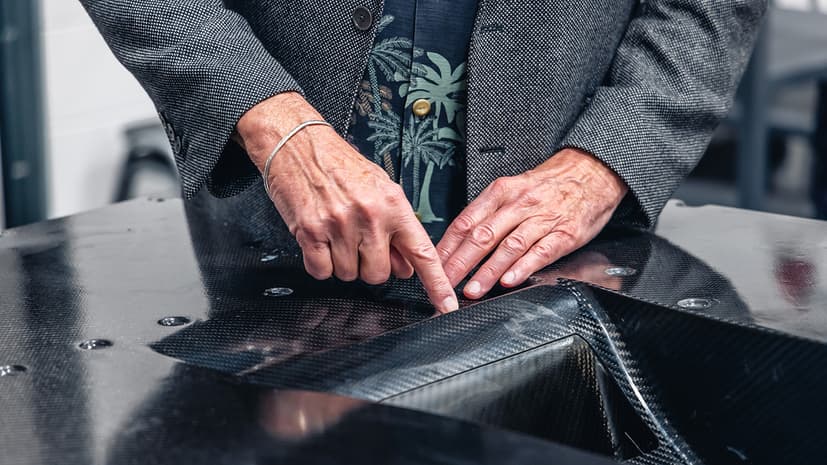
“When the driver selects aero mode, you can get a live reading of the downforce you’ve dialled up,” says Gordon, talking about genuine aerospace tech as if he’s explaining how to make a cup of tea.
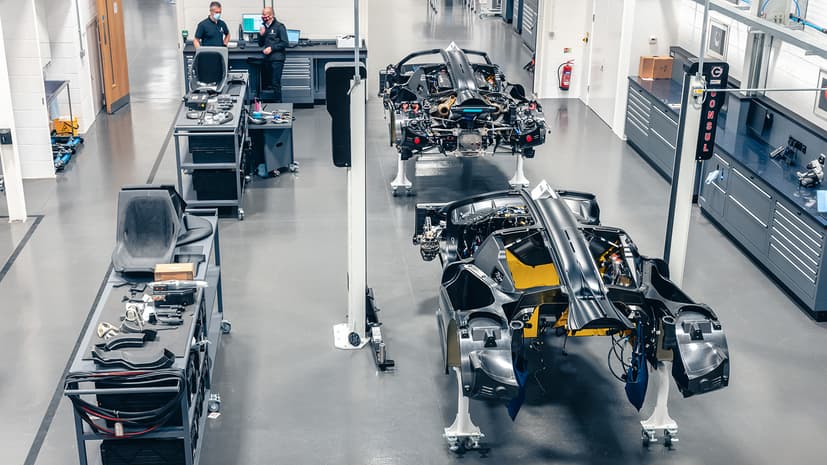
Moving to a more naked T50, Gordon points out brackets that’d had the middle machined out to save a few grammes, and forged aluminium suspension components that look like designer mountain bike framing. “Normally you’d never do forgings like this if you’re only making 100 cars.” There’s a sense of ‘if it’s not going to be perfect, why even bother’ about the whole construction.
How close are they to the 986kg ‘mass track’ kerbweight? “We’re definitely still under 1,000kg, but where we are this week I don’t know. It changes week by week by 100 grammes here and there.”
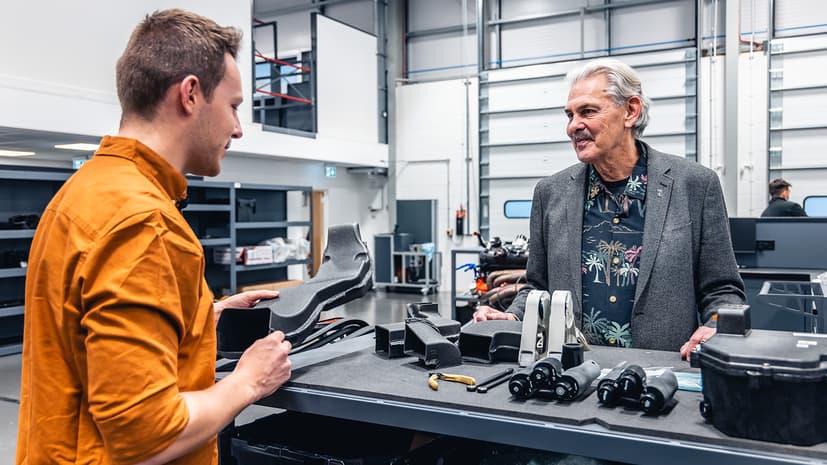
“Sometimes even carbon fibre ducting is too heavy,” says Gordon, handing me a foam duct that’ll form part of the heater system. It’s one of the few T50 pieces which doesn’t look or smell all that expensive. But it is indeed lighter than a plastic or carbon one would be, and because it doesn’t need to carry any load, foam is fine. I like that just because Gordon could’ve made the car even more expensive – more carbon-y – he didn’t.
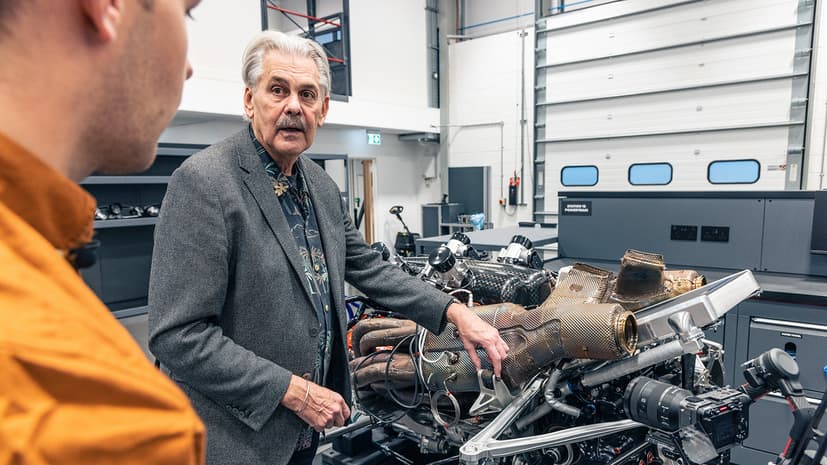
Servicing and maintenance isn’t as sexy as speed or downforce, but it matters to GMA. A T50 MoT is supposedly less of a palaver than it is for McLaren F1 owners. Why? Because cars that are easy to service are more likely to be used, reckons the professor. And he wants T50 owners to daily-drive their tri-seat fancars, not simply bury them in the collection bunker.
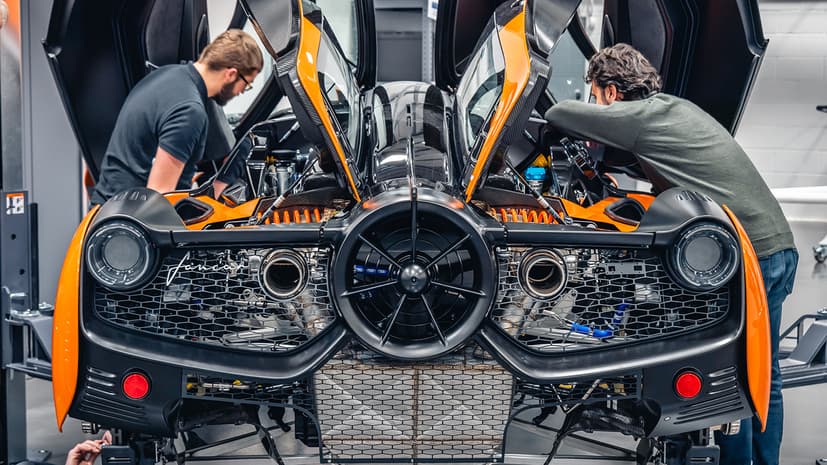
“A good example of us developing our own technology is over here.” I’m presented with a black box the size of a toolkit. “Normally a 12-volt battery for a car like this would weigh about 18 kilos. This is a 12-volt battery, a 48-volt battery, a cooling system, and inverter, a controller and the charging system, and it’s 13 kilos.
"If anything ever goes wrong, it’s easy to swap out. And you don’t have to remove the engine to get at it, like you did on the F1.”
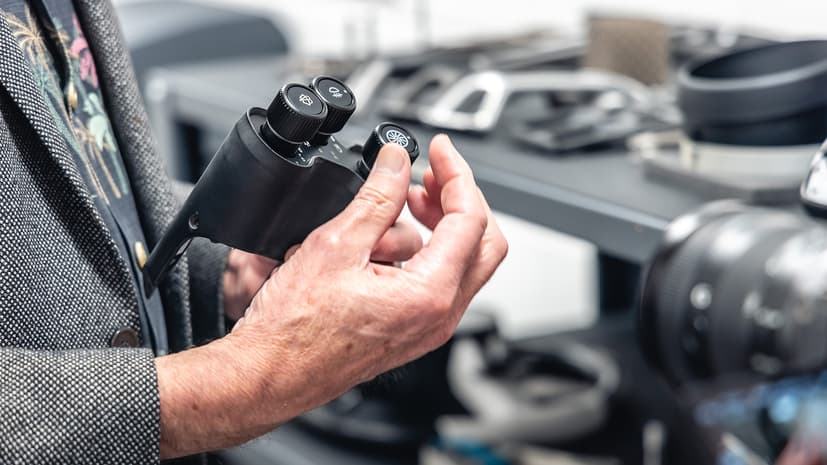
‘A work of art’ is how Murray described the handbrake lever, with its red button and gold-coloured ratchet. Couldn’t agree more. The door handles are 3D-printed instead of cast, so if you were to slice one in half, you’d find it’s got a beehive-like honeycomb inside. Saves 200 grammes, even if it’s massively more labour-intensive to design, and cost £800 a pop.
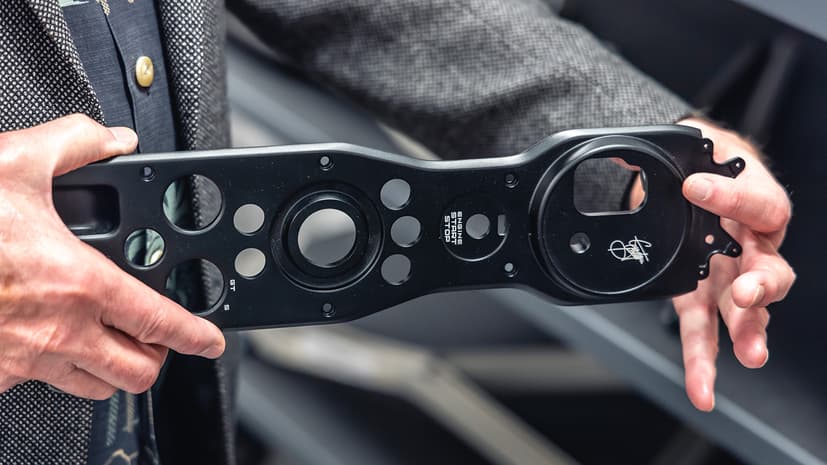
All of the switchgear’s been done from scratch – no parts bin Ford or Volvo buttons in the T50. Murray’s brief was for all the toggles to have the feel of a high-end camera. The controls are ‘floodlit’ at night, rather than concealing individual bulbs.
I’m handed a carbon fibre rod. Looks like pricey finishing equipment. “We bolt the suspension to the transmission casing, so there’s no chasing back there. I had to get 400kg of load each side from the diffuser back to the chassis. So this takes 400kg.” And it’s the width and weight of a wax candle. Madness. But wonderful.

It’s important to stress this is all bespoke. "On the McLaren F1, I didn’t have the budget I had for this,” Gordon laments. That’s why the F1 used lights from a coach, the mirrors from a VW Corrado and a mish-mash of switchgear. “This car doesn’t have one carryover component,” he confirms, clutching a rev-counter with machined aluminium numbers diced into its face instead of using paint or stickers. “No plastic, as ever. This costs a fortune to develop,” he laughs.
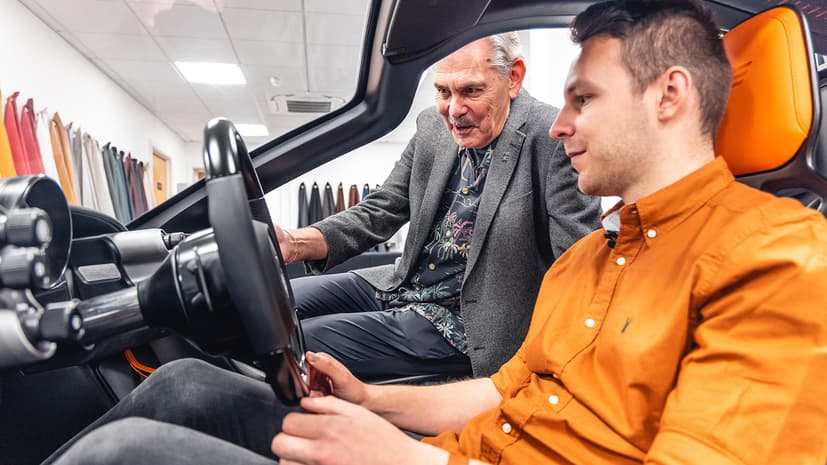
As you’ll see if you check out the video of the tour, Gordon doesn’t have a cheat sheet of numbers to hand, an assistant speaking into an earpiece, or an autocue. Every single fact and figure is committed to memory. He speaks without pauses. He doesn’t do ‘uhms’ or ‘yeah, so anyways’, because his speech – as with his car design – is free of unnecessary blabber. It’s somehow incredibly calming to listen to.
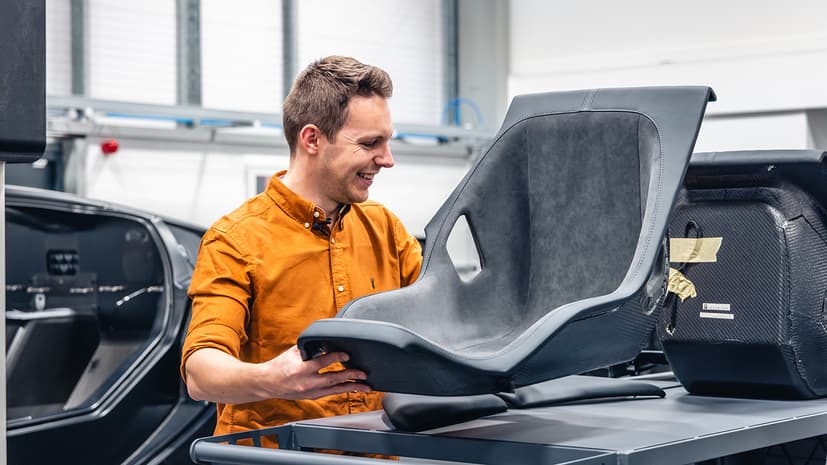
A 12,000rpm piston. A valve. One of the gears. More and more parts are offered over to caress. I recognise their basic functions, but I’ve never seen car innards that look this attractive on their own. Each and every one could be framed and mounted on your wall or posed in a gallery, and a visitor would never ask ‘why?’, only ‘ooh, what’s that?’
Even the bolts do their job saving weight. Resisting the urge to pocket one, Gordon explains how machining a concave cavity out of each head saves a hundredth of a gramme on each bolt. “With 900 bolts in each car, it all adds up.”
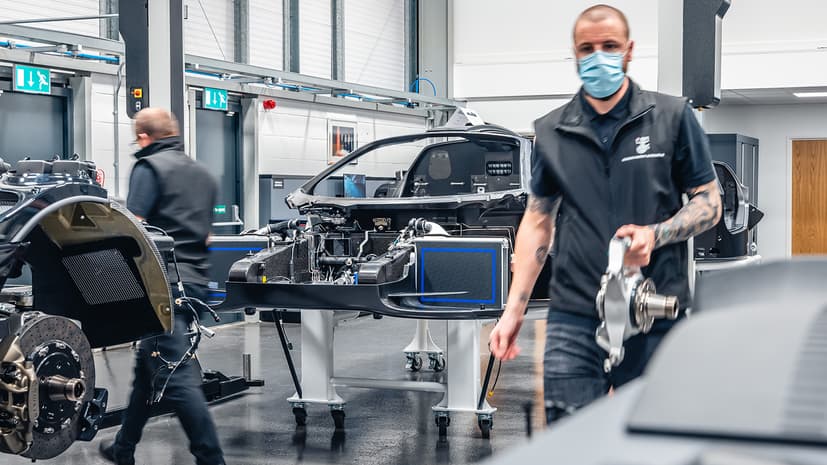
When Gordon was working on the McLaren F1, his engineers were forced to come to the boss and beg to use a washer – justifying why it was required. Is that still the case? “Not this time – my team are so well-drilled,” grins the prof. Everyone at GMA shares his obsession with attention to detail. Which explains why the workshop is so clean. All chatter is a polite volume. All the stock labels are neatly written.
I quietly wonder how this team functions outside their perfectly ordered microclimate. What happens when they go to a petrol station or a McDonalds and there’s queuing and litter and general inefficiency? Must be a living nightmare.
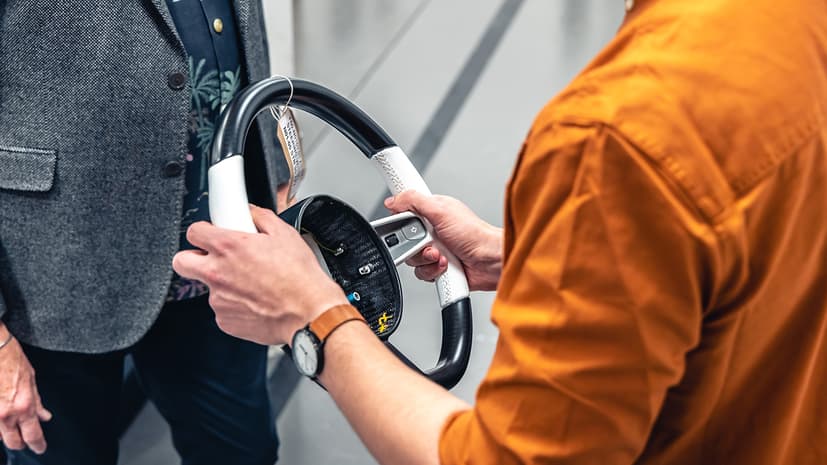
“The magnesium rim everyone else uses wasn’t cutting it.” Gordon’s now handing me a T50 steering wheel. It’s so light I expect it to hover in mid-air. “We bit the bullet and tooled our own carbon wheel. It’s 800 grammes complete with switchgear.” Why bother? Because the lighter the steering wheel is, the less steering feel is corrupted. It’s also free of silly bulges or an overly thick rim. The purity is beguiling.
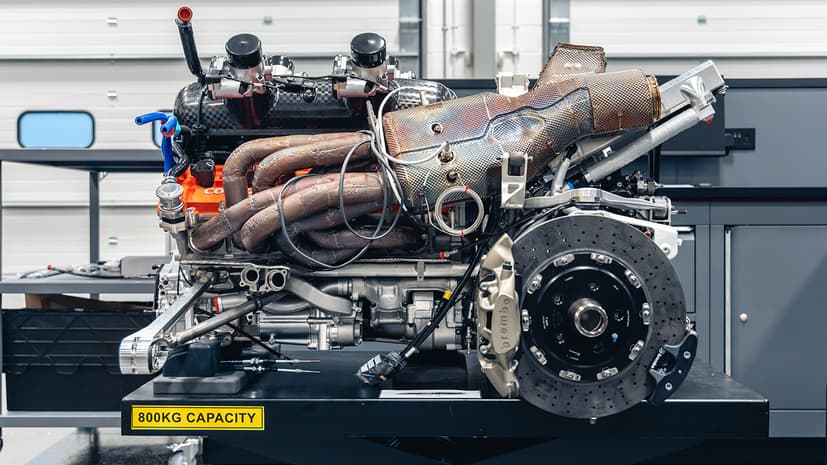
Finally, we mosey over to the engine end of the shop, where the 650bhp Cosworth V12s – ready mated to the transmission, suspension and brake assemblies – lie in wait. The header covers are orange for the T50, and yellow for the newer T33. Mark that in your spotter’s guide.
“With each car you’ll get a diagnostic tablet,” Murray notes – a free iPad, basically. That’s how your friendly GMA technician will download the car’s behaviour and service it. Gordon conspicuously never uses the work ‘break-down’. “Pick up the phone and we’ll sort it. We’ve got several service centres and approved workshops around the world.”
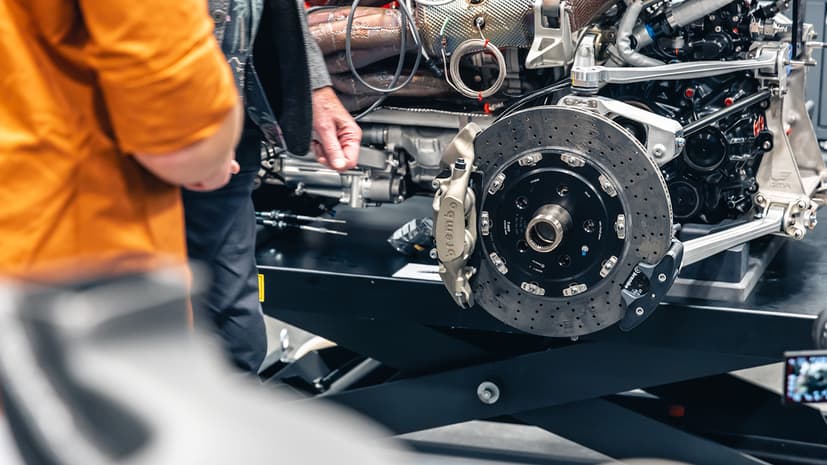
Having not mentioned anything lightweight for a minute, Gordon’s off again with a brake-related anecdote. “We took the lightest calliper we could, did another stress loop on it, post-machined it so it’s like Swiss cheese now, and it saves 800 grammes.”
The disc is Brembo’s latest carbon-ceramic, but the rears are grabbed by a mechanical handbrake "because it’s 2.8kg lighter". Murray has the tone of a proud parent: he’s taken great pride in his work but never veers into showing off.
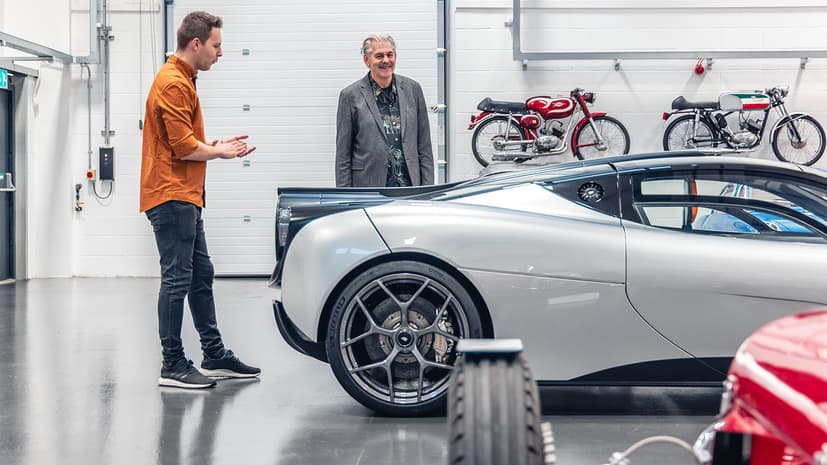
I think he’s created this clientele private tour not so much to throw shade at other carmakers, but to hopefully convert some of the world’s car-collecting squillionaires to follow his weight-saving commandments – and hopefully demand them of other carmakers.
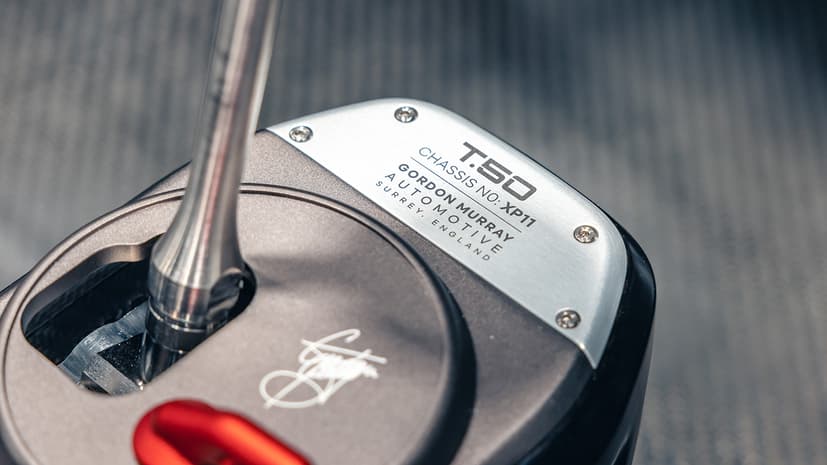
The Murray Doctrine is a seductive one. If his hero Colin Murray was ‘simplify and add lightness’, then what I’ve learned today from Gordon is to ‘accept no substitute for lightness’. Unless it makes changing gear feel slicker.
PHOTOS Johnny Fleetwood
TEXT Ollie Kew






